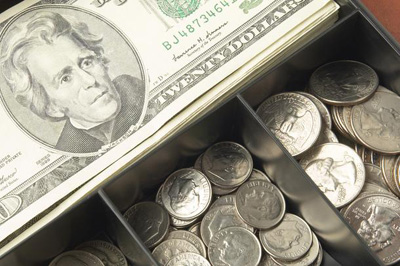| In this example, you are the owner of a small business that performs computer consulting services. In order to purchase equipment and to cover other growth required expenditures, you have borrowed $150,000 from a bank. | |
| As part of your agreement with the bank, you need to have annual financial statements prepared, and submitted within 90 days after the end of your business fiscal year. | |
| The financial results at the end of the first year are promising. The gross revenue of the business is $850,000, and expenses are $575,000, leaving a profit of $275,000. | |
| You ask your accountant if your business will need to pay income taxes on a profit of $275,000, which if you assume is taxed at a rate of 35% calculates to $96,250, leaving an after tax profit of $178,750. | |
| Your accountant tells you the income tax may be less if your business files its income tax returns using the cash basis of accounting, which (subject to IRS rules and regulations), is an acceptable method. | |
| Under the cash method of accounting, the revenues of a business are calculated by including as revenue only the amount of services that your customers have actually paid for, and expenses are deductible only when your vendors have actually been paid. | |
| In our illustration the business at the end of its fiscal year has $200,000 of accounts receivable from customers, and owes vendors $50,000. | |
| So a simplified calculation of taxable income is as follows: | |
| Net profit on an accrual basis of accounting | $ 275,000.00 |
| Less amounts due from customers | (200,000.00) |
| Plus amounts due to vendors | 50,000.00 |
| Taxable profit using cash basis of accounting | $ 125,000 |
| Income tax based on cash basis of accounting | $ 43,750 |
| This example is for illustration purposes only |
